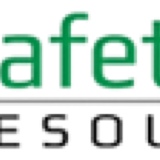Information
-
Audit Title
-
Client / Site
-
Conducted on
-
Prepared by
-
Location
-
Personnel
1. Documentation/Supplies
-
1.1. Company safety manual accessible?
-
1.2. Safety Data Sheets on file or in binder?
-
1.3. First aid kit available and adequate?
-
1.4. Job safety and health protection poster?
-
1.5. Site evacuation procedures posted? (If applicable)
-
1.6. Emergency Telephone numbers posted including name and number of closest medical facility?
-
1.7. Workers comp carrier notification?
-
1.8. OSHA 300 log posted ( feb 1- April 30)
-
1.9. Orientation program in place?
2. Hand and Power Tools
-
2.1. Tools maintained in safe condition?
-
2.2. Guards in place and operable?
-
2.3. Cords and hoses protected from damage?
3. Scaffolds
-
3.1. Scaffold erected by qualified workers?
-
3.2. Scaffold safe and complete?
-
3.3. Scaffold inspected per protocol?
-
3.4. Scaffold components are compatible and meet OSHA?
-
3.5. Safe Work Load (SWL) not exceeded? (tools, stored materials, number of persons)
4. Lifting Equipment
-
4.1. Rigging and lifting equipment in safe condition and in good working order?
-
4.2. Loads not lifted over persons, close proximity to obstacles incl. overhead power lines?
-
4.3. Rigging and lifting equipment being maintained and inspected per protocol?
-
4.4. Load capacity visible on lifting equipment?
-
4.6. Safe rigging practices being utilized?
-
4.7. Riggers have been trained to standard?
-
4.8. Rigging and lifting equipment stored properly?
5. Fall Protection and Prevention
-
5.1. Harness utilized where needed?
-
5.2. Fall arrest system in safe condition?
-
5.3. Harness worn properly?
-
5.4. Employees trained in the use, limitation, and care of fall protection?
-
5.5. Floor hole coverings installed properly?
-
5.6. Anchorage point capable of supporting falling load forces?
-
5.7. Leading edge protected from falls?
6. Ladders
-
6.1. Ladder in safe condition?
-
6.2. Ladder positioned correctly?
-
6.3. Ladder properly secured?
-
6.4. Ladder suitable for job? (e.g. nonmetal ladder used for electrical work)
7. Signage and Warning Equipment
-
7.1. Warning signs in place, visible and in good condition?
-
7.2. Emergency exits clearly marked and visible?
-
7.3. Traffic control signs in place, visible and in good condition?
-
7.4. Safe load limits marked on shelves and platforms?
-
7.5. Accident prevention tags used as needed?
8. Fire Prevention
-
8.1. Proper flammable storage in place and utilized?
-
8.2. Secondary spill containment equipment provided where needed?
-
8.3. Chemical and flammable segregated from incompatibles?
-
8.4. Storage areas marked and posted?
-
8.5. Flammable liquids stored properly?
-
8.6. Flammable gases stored properly?
-
8.7. Adequate means of ventilation for storage provided?
-
8.8. Fire extinguisher inspected, fully charged with seal and tag?
-
8.9. Fire equipment accessible and clear of debris
-
8.10. Fire extinguisher tags clearly marked over fire extinguishers?
9. Emergency Response
-
9.1. Employees aware of procedure for reporting incidents?
-
9.2. Eye wash/safety shower available when necessary?
-
9.3. Adequate communication equipment available?
-
9.4. Trained first aid and CPR personnel provided?
10. Sanitation, Lighting, and Drinking Water
-
10.1. Bathroom facilities adequate and maintained?
-
10.2. Hand wash facilities provided as required?
-
10.3. Work area provided with sufficient lighting?
-
10.4. Drinking water containers labeled and sealed?
-
10.5. Water coolers regularly filled and cleaned?
11. Personal Protective Equipment (PPE)
-
11.1. Hard hats worn correctly and in good condition when needed?
-
11.2. Eye protection worn correctly and in good condition when needed?
-
11.3. Proper glove selected and worn for the task being performed?
-
11.4. Proper respiratory protective equipment selected and used?
-
11.5. Proper foot protection selected and being used?
-
11.6. Hearing protection used in required areas?
12. Housekeeping
-
12.1. Work areas clean and free of excess trash and debris?
-
12.2. Walking and working surfaces clear of clutter to allow safe passage?
-
12.3. Items maintained in elevated work areas to prevent falling to areas below?
-
12.4. Exposed rebar ends protected?
13. Electrical Hazards
-
13.1. GFCI used at power source when required.
-
13.2. Temporary lighting in good condition and guards in place?
-
13.3. Electrical panels and disconnects clear of debris and/or materials?
-
13.4. Live parts covered or guarded?
-
13.5. Outlets not over loaded?
-
13.7. Electrical equipment not near water?
-
13.8. Electrical equipment not near flammables?
-
13.9. Electrical cords protected from moving equipment or damage?
-
13.12. Lock-out/tag-out (LOTO) procedures in place for electrical equipment?
14. Environmental
-
14.1. Environmental Management plan (EMP) in place where needed?
-
14.2. Dust suppression system adequate where needed?
-
14.3. Spill clean up material available where needed?
-
14.4. Drums labeled and in good condition?
15. Excavations and Trenches
-
15.1. One call made prior to soil disturbance?
-
15.2. Safe means of access provided at required intervals?
-
15.3. Excavation free of cracks, sloughing material or water?
-
15.4. Spoil pile located at least 2' from edge of excavation or trench?
-
15.5. Excavation or trench stepped, sloped or shored as per soil classification?
-
15.6. Trench box positioned correctly and providing adequate protection?
-
15.7. Shoring installed correctly and providing adequate protection?
-
15.8. Excavation protected from vehicular traffic?
-
15.9. Proper barricades and warning signs/lights installed when required?
Corrective Actions
-
Enter any corrective actions that will be undertaken
Sign Off
-
On site representative
-
Auditor's signature






